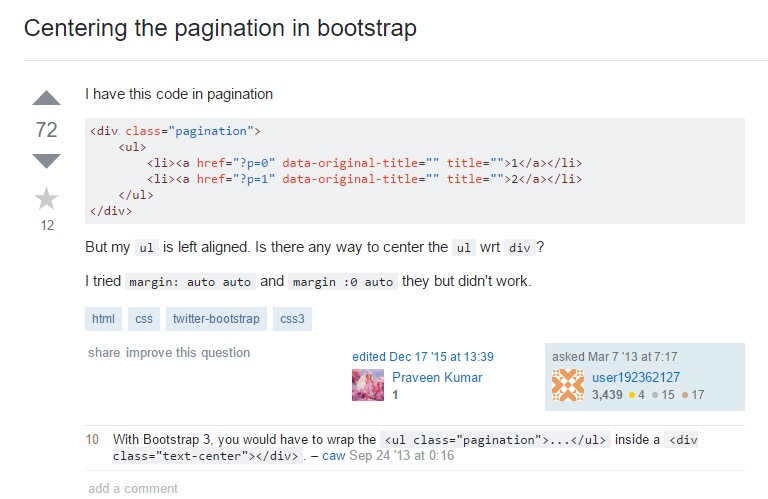Bootstrap Pagination Responsive
Overview
An upward trend in the front-end world is the use of CSS frameworks with base styles for our page. Instead of starting every project from scratch, creating every style in the hand, there are frameworks that already bring a whole built base from where we will start our application.
Bootstrap introduces a lot of capabilities:
● Reset CSS
● Base graphical style for most tags
● Icons.
● Grids ready for use.
● CSS Components.
● JavaScript Plugins.
● All responsive and mobile-first .
As its name claims, it is a solution to launch the project very soon with a very simple concept and components without exhausting design time in the beginning.
Essential pagination principles.
Whenever we have a page with a large number of items to present, paging becomes necessary. We understand that when it comes to catalogs, including displaying goods in web stores or search results in systems, the need is not to show all objects instantly, but in preference to coordinate them properly, helping to make them a lot easier to gain access to, a lot faster and more typical webpages.
Shown below are some great tactics in the use of Bootstrap Pagination, despite the technology applied ( get more information)
Pagination: an excessive caption.
Paging dispenses the title when well designed. That is , if you had to write "Pagination" for the user of Bootstrap Pagination Demo to apply, there is one thing inappropriate: think of redesigning it!
Really good visualness and setting.
Paging is a complementary site navigation and should certainly provide great placement and excellent presence. Use fonts with proportions and colors that follow the pattern of page usage, delivering excellent exposure and placing it right after the item listing ends.
Be simple as abc.
Certain paging instruments offer enhanced navigation capabilities just like going right to a targeted webpage or perhaps advancing a specific amount of webpages at one time. Even if they are extra features, users are much more familiar with easy designs and perform more effective with usual styles.
Generate ordering solutions.
A great and highly recommended function is to bring grouping solutions to optimise their use.
Do not make use of subscript formats on urls.
In paging instruments, these kinds of functions are unneeded, since the links are clear and the subscript design will simply just leave the visional filled. ( discover more)
Grant good place for clickable locations.
The larger the clickable space the better convenient the tabs get and as a result easier to apply.
Grant gaps between web links
Area coming from one tab to one other will help to make paging a lot more comfortable and user-friendly , avoiding undesirable access.
Establish the current webpage and give the basic navigation urls.
The paging purpose is to help with user site navigation, so the tool should keep it understandable precisely where the user is, precisely where he has been and where exactly he can go on.
Produce simple navigation web links such as "Previous Page" along with "Next Page", always locating them at the beginning and end.
Deliver helpful shortcuts and supplementary relevant information
Links to the "first page" and "last page" are often valuable, look at them assuming that it is required!
Use a wrapping
<nav>Also, as pages probably have more than one such site navigation part, it's smart to present a descriptive
aria-labelaria-label="Search results pages"<nav aria-label="Page navigation example">
<ul class="pagination">
<li class="page-item"><a class="page-link" href="#">Previous</a></li>
<li class="page-item"><a class="page-link" href="#">1</a></li>
<li class="page-item"><a class="page-link" href="#">2</a></li>
<li class="page-item"><a class="page-link" href="#">3</a></li>
<li class="page-item"><a class="page-link" href="#">Next</a></li>
</ul>
</nav>Bootstrap Pagination
Classic Bootstrap Pagination Responsive
In case that you have a online site using a lot of pages, you may perhaps really want to add in some sort of pagination to every single web page.
To produce a general pagination, incorporate the
.pagination<ul>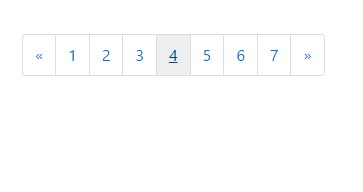
<nav>
<ul class="pagination">
<li class="page-item">
<a href="#" class="page-link" aria-label="Previous">
<span aria-hidden="true">«</span>
</a>
</li>
<li class="page-item"><a href="#" class="page-link">1</a></li>
<li class="page-item"><a href="#" class="page-link">2</a></li>
<li class="page-item"><a href="#" class="page-link">3</a></li>
<li class="page-item"><a href="#" class="page-link">4</a></li>
<li class="page-item"><a href="#" class="page-link">5</a></li>
<li class="page-item"><a href="#" class="page-link">6</a></li>
<li class="page-item"><a href="#" class="page-link">7</a></li>
<li class="page-item">
<a href="#" class="page-link" aria-label="Next">
<span aria-hidden="true">»</span>
</a>
</li>
</ul>
</nav>Bootstrap 4 and Bootstrap 3 characteristics
Bootstrap 3 only needs the
.paginationBootstrap 4, besides the
.pagination.page-item<li>.page-link<a>Dealing with icons
Seeking to employ an icon or symbol in place of content for several pagination links? Ensure to give correct screen reader support with
aria.sr-only<nav aria-label="Page navigation example">
<ul class="pagination">
<li class="page-item">
<a class="page-link" href="#" aria-label="Previous">
<span aria-hidden="true">«</span>
<span class="sr-only">Previous</span>
</a>
</li>
<li class="page-item"><a class="page-link" href="#">1</a></li>
<li class="page-item"><a class="page-link" href="#">2</a></li>
<li class="page-item"><a class="page-link" href="#">3</a></li>
<li class="page-item">
<a class="page-link" href="#" aria-label="Next">
<span aria-hidden="true">»</span>
<span class="sr-only">Next</span>
</a>
</li>
</ul>
</nav>Active form
The active state demonstrates what exactly the current webpage is.
Add
.active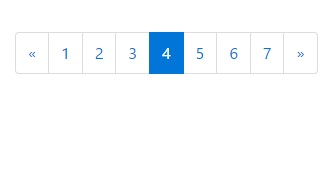
<nav>
<ul class="pagination">
<li class="page-item">
<a href="#" class="page-link" aria-label="Previous">
<span aria-hidden="true">«</span>
</a>
</li>
<li class="page-item"><a href="#" class="page-link">1</a></li>
<li class="page-item"><a href="#" class="page-link">2</a></li>
<li class="page-item"><a href="#" class="page-link">3</a></li>
<li class="page-item active"><a href="#" class="page-link">4</a></li>
<li class="page-item"><a href="#" class="page-link">5</a></li>
<li class="page-item"><a href="#" class="page-link">6</a></li>
<li class="page-item"><a href="#" class="page-link">7</a></li>
<li class="page-item">
<a href="#" class="page-link" aria-label="Next">
<span aria-hidden="true">»</span>
</a>
</li>
</ul>
</nav>Disabled Form
A disabled hyperlink can not be clicked on:
Add
.disabled
<nav>
<ul class="pagination">
<li class="page-item">
<a href="#" class="page-link" aria-label="Previous">
<span aria-hidden="true">«</span>
</a>
</li>
<li class="page-item"><a href="#" class="page-link">1</a></li>
<li class="page-item"><a href="#" class="page-link">2</a></li>
<li class="page-item"><a href="#" class="page-link">3</a></li>
<li class="page-item disabled"><a href="#" class="page-link">4</a></li>
<li class="page-item"><a href="#" class="page-link">5</a></li>
<li class="page-item"><a href="#" class="page-link">6</a></li>
<li class="page-item"><a href="#" class="page-link">7</a></li>
<li class="page-item">
<a href="#" class="page-link" aria-label="Next">
<span aria-hidden="true">»</span>
</a>
</li>
</ul>
</nav>Pagination Size
Paging blocks can as well be scaled to a bigger or smaller proportions.
Add
.pagination-lg.pagination-sm
<nav>
<ul class="pagination pagination-lg">
<li class="page-item">
<a href="#" class="page-link" aria-label="Previous">
<span aria-hidden="true">«</span>
</a>
</li>
<li class="page-item"><a href="#" class="page-link">1</a></li>
<li class="page-item"><a href="#" class="page-link">2</a></li>
<li class="page-item"><a href="#" class="page-link">3</a></li>
<li class="page-item"><a href="#" class="page-link">4</a></li>
<li class="page-item"><a href="#" class="page-link">5</a></li>
<li class="page-item"><a href="#" class="page-link">6</a></li>
<li class="page-item"><a href="#" class="page-link">7</a></li>
<li class="page-item">
<a href="#" class="page-link" aria-label="Next">
<span aria-hidden="true">»</span>
</a>
</li>
</ul>
</nav>
<nav>
<ul class="pagination">
<li class="page-item">
<a href="#" class="page-link" aria-label="Previous">
<span aria-hidden="true">«</span>
</a>
</li>
<li class="page-item"><a href="#" class="page-link">1</a></li>
<li class="page-item"><a href="#" class="page-link">2</a></li>
<li class="page-item"><a href="#" class="page-link">3</a></li>
<li class="page-item"><a href="#" class="page-link">4</a></li>
<li class="page-item"><a href="#" class="page-link">5</a></li>
<li class="page-item"><a href="#" class="page-link">6</a></li>
<li class="page-item"><a href="#" class="page-link">7</a></li>
<li class="page-item">
<a href="#" class="page-link" aria-label="Next">
<span aria-hidden="true">»</span>
</a>
</li>
</ul>
</nav>
<nav>
<ul class="pagination pagination-sm">
<li class="page-item">
<a href="#" class="page-link" aria-label="Previous">
<span aria-hidden="true">«</span>
</a>
</li>
<li class="page-item"><a href="#" class="page-link">1</a></li>
<li class="page-item"><a href="#" class="page-link">2</a></li>
<li class="page-item"><a href="#" class="page-link">3</a></li>
<li class="page-item"><a href="#" class="page-link">4</a></li>
<li class="page-item"><a href="#" class="page-link">5</a></li>
<li class="page-item"><a href="#" class="page-link">6</a></li>
<li class="page-item"><a href="#" class="page-link">7</a></li>
<li class="page-item">
<a href="#" class="page-link" aria-label="Next">
<span aria-hidden="true">»</span>
</a>
</li>
</ul>
</nav>Transform the alignment of pagination components using flexbox utilities.

<nav aria-label="Page navigation example">
<ul class="pagination justify-content-center">
<li class="page-item disabled">
<a class="page-link" href="#" tabindex="-1">Previous</a>
</li>
<li class="page-item"><a class="page-link" href="#">1</a></li>
<li class="page-item"><a class="page-link" href="#">2</a></li>
<li class="page-item"><a class="page-link" href="#">3</a></li>
<li class="page-item">
<a class="page-link" href="#">Next</a>
</li>
</ul>
</nav>
<nav aria-label="Page navigation example">
<ul class="pagination justify-content-end">
<li class="page-item disabled">
<a class="page-link" href="#" tabindex="-1">Previous</a>
</li>
<li class="page-item"><a class="page-link" href="#">1</a></li>
<li class="page-item"><a class="page-link" href="#">2</a></li>
<li class="page-item"><a class="page-link" href="#">3</a></li>
<li class="page-item">
<a class="page-link" href="#">Next</a>
</li>
</ul>
</nav>Inspect a couple of on-line video tutorials about Bootstrap Pagination
Connected topics:
Bootstrap pagination approved documentation
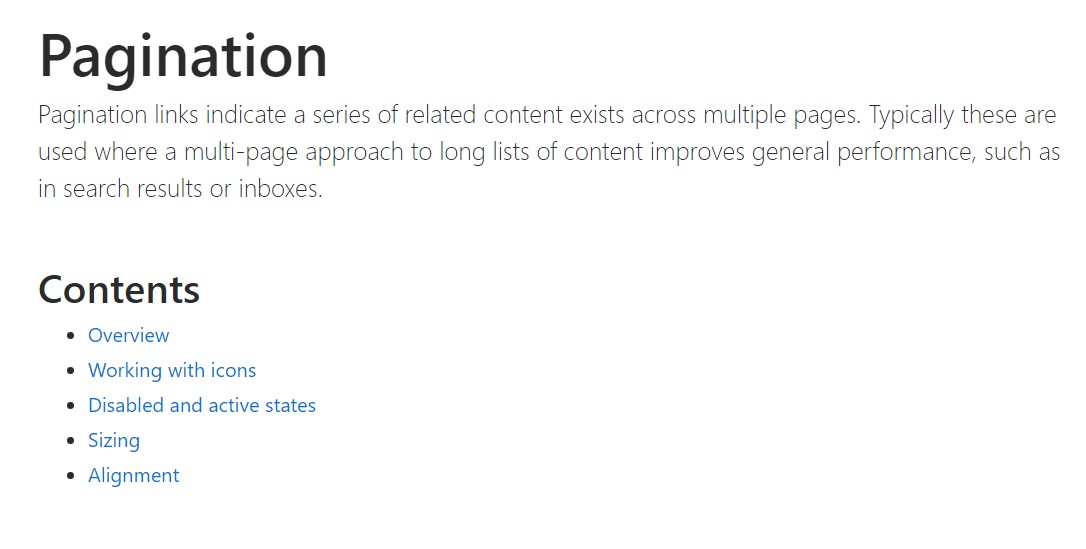
W3schools:Bootstrap pagination tutorial
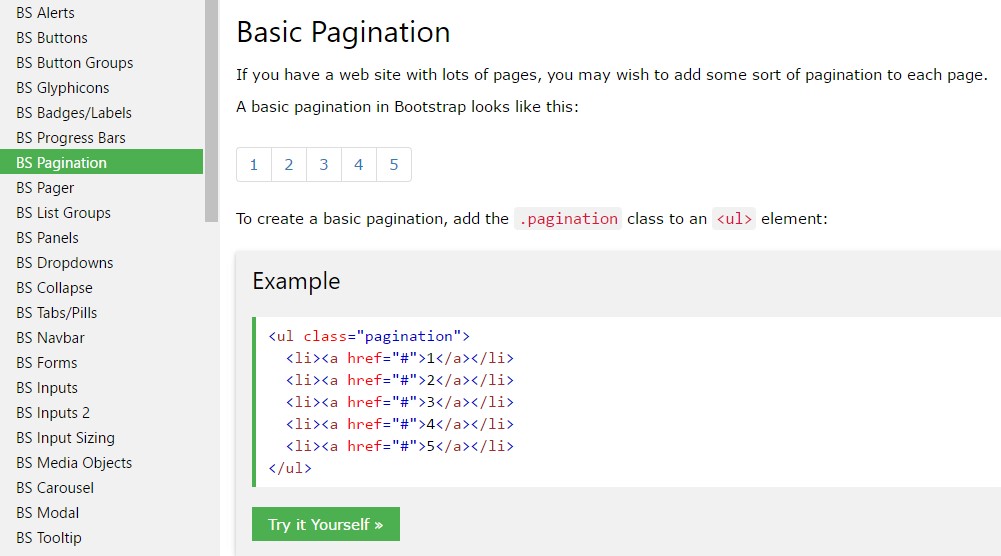
Centering the pagination in Bootstrap
